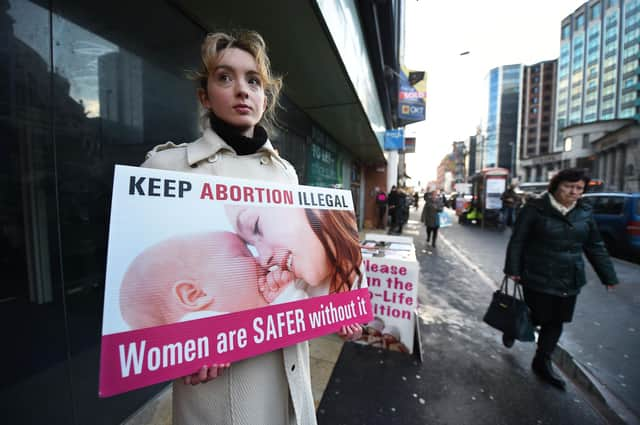Anti-abortion protests outside clinics should not be allowed to intimidate women – Laura Waddell


Troglodyte SNP MSP John Mason – an embarrassment to his party – revealed he had attended what he described as a “vigil” outside the Queen Elizabeth University Hospital (QEUH) in Glasgow.
More shockingly, a woman outside Edinburgh’s Chalmers Clinic was allegedly hit by a car driven by an anti-abortion protester earlier this month.
Advertisement
Hide AdAdvertisement
Hide AdCalls for buffer zones have rumbled on for years, but never picked up steam. The issue has been batted between councils and the parliament.
Part of the reticence stems from the Scottish government’s fears over legal challenges citing the European Convention on Human Rights (ECHR).
At the moment, by doing nothing, the Scottish government is expecting women to simply absorb their fear. But our security, safety and peace of mind is not acceptable collateral damage. Women shouldn’t be cowed by anti-abortionists – and neither should our government on our behalf.
Anti-abortionists, when challenged, see no irony in complaining that their freedoms are being trampled upon.
But buffer zones around clinics neither remove their right to protest, nor interfere with their individual religious beliefs. They can do what they want with their own bodies – at a distance.
Buffer zones remove the ability of anti-abortionists to terrorise women accessing healthcare on the very doorsteps of the clinics.
If the modus operandi of anti-abortionists is intimidation – whether by creeping around the edges of clinics or through legal troublemaking – the Scottish Parliament should be in a stronger place to stand up to it than any individual who currently has to bear it.
It is far beyond time that Scotland’s elected politicians took decisive action to get buffer zones put into place.
Advertisement
Hide AdAdvertisement
Hide AdThe campaign group Back Off Scotland suggests a sensible exclusion length of 150 meters. Their petition to the Scottish government points out that “we know buffer zones work”.
In Ealing, London, buffer zones have already been successfully implemented. With the ‘safe zone policy’, “clinic users and staff have finally been protected from the daily ... intimidation and harassment that had occurred ... for more than 23 years,” the campaigners say.
Indeed, the Scottish government’s own women’s health plan recognises the need to work with local authorities and the NHS to find “ways of preventing women feeling harassed when accessing abortion care due to protests or vigils”.
Not every patient harassed on their way into a clinic will be there to terminate a pregnancy, nor, even if there for that purpose, will they necessarily be in a vulnerable mental state.
Frankly, the medical care of any individual, and how they feel about it, is a matter for them and their doctor alone.
But causing women distress and fear is the explicit aim of anti-abortion protests outside hospitals. They believe they should get to decide what happens to women’s bodies.
With their graphic, shocking placards and ugly fire and brimstone words, those picketing hospitals try to prevent access to healthcare through antagonisation and intimidation. It’s 2021. Get them sent packing.
